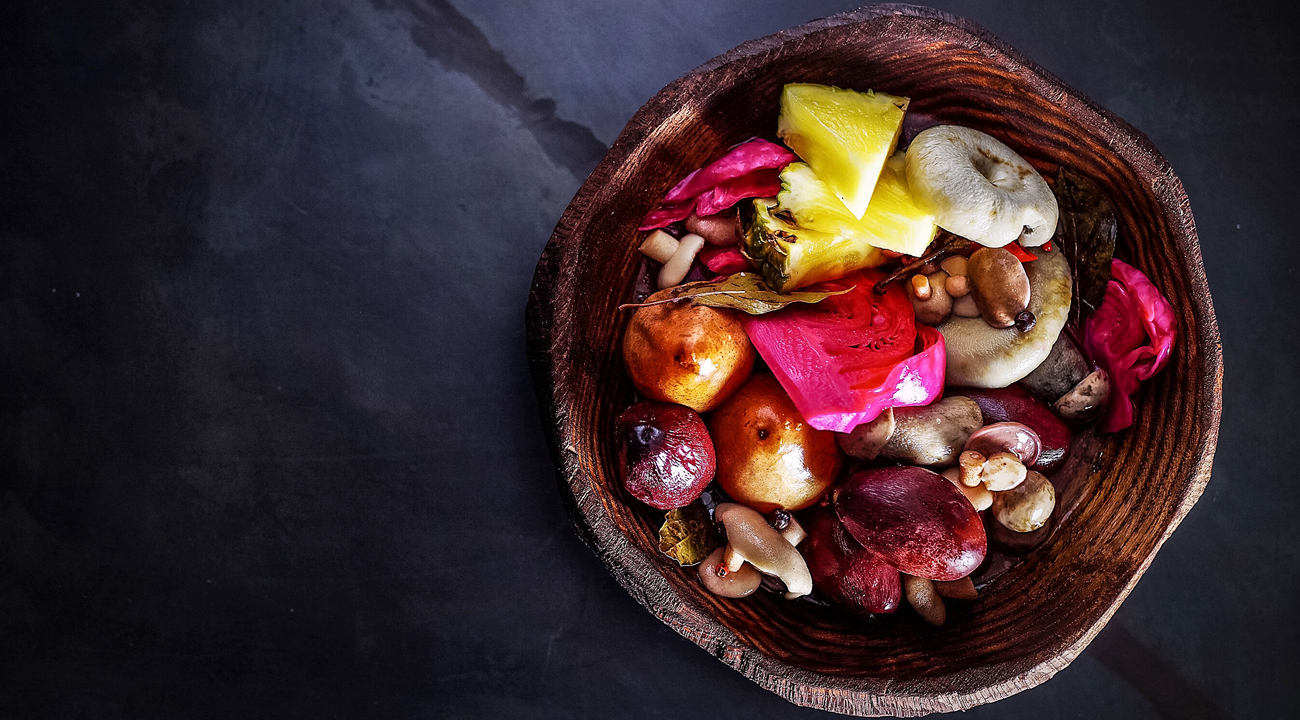
These pickles bring together traditional recipe and contemporary rethink.
Photo courtesy of the Kutuzovsky 5 restaurantRussian cuisine has now moved well beyond the traditional pirozhki, blini and borsch, largely because of the efforts of daring and innovative local chefs with a desire to prove that their national food can rival the global leaders.
Vladimir Mukhin of the top-ranked White Rabbit; Ivan and Sergey Berezutskiys, the chefs behind Twins and Wine and Crabs; Sergey Yeroshenko of Chestnaya Kukhnya and Anatoly Komm are just a few of the modern cooks breathing new life into traditional Russian food.
In Moscow, going out for a Russian meal has traditionally meant a trip to Cafe Pushkin or Boris Godunov, showpiece restaurants where the food and surroundings imitate the great kitchens of the 19th century. Today, however, the capital’s foodies want Russian cuisine that honours the past, but speaks to the future.
Like in many of the world’s culinary capitals, the restaurants serving nouvelle Russian cuisine look to local products for their inspiration. Unique northern berries, such as the cloudberry, lingonberry, honeyberry and sea buckthorn are taking pride of place in sauces and desserts while quail, Kamchatka crab, muksun, omul and trumpetfish are served up for the main course.
Chefs in Russia are searching from Sakhalin Island to the Volga to the Black Sea coast for roots, herbs and berries that were used in the past, but have since been forgotten. And their food is not just tasty; it is beautiful. Hemp-based tartare, porridge in celeriac, and seafood prepared in an envelope as if had just been delivered from the Pacific will impress the most sceptical of gourmands.
Restaurant kitchens have been turned into laboratories where culinary professionals develop the flavours of new Russian gastronomy, creating menus that demonstrate the results of these creative experiments. Sometimes chefs act as anthropologists, uncovering the authentic tastes of the past.
The Kutuzovsky 5 restaurant (Kutuzovskiy ave, 5/3) offers contemporary versions of dishes popular 300 years ago. The kitchen here follows recipes from the 18th and 19th centuries, while the menu presents the traditional Russian name of the dish next to its modern variant. There is “utya (ancient Russian for “duck”) with mushrooms”, “lazy nyanya” (a kind of soup), “Perm posikunchiki” (little dumplings), as well as a variety of porridges, meat in aspic and pickled or marinated fruits and vegetables.
The Mushrooms restaurant (Bolshaya Yakimanka, 22) features a traditional Russian stove, but the chefs there use it to prepare focaccia and pizza. The tables are set with recycled bits of valenki (traditional Russian felt boots) rather than napkins. Unsurprisingly, the focus of the restaurant is various types of fungi — a crucial ingredient for Russian cuisine. Make sure to try the black chanterelle jam.
Chefs from various regions of Russia are also making their mark in the nation’s capital. The chef at the restaurant B.I.G.G.I.E. (Radisson Royal Hotel, Kutuzovskiy ave, 2/1), a native of Rostov-on-Don, wows his guests with the traditions of that southern city; among them doughnuts with duck hearts, pickled mackerel with antonovka apples, baked beets with caramelized sulguni cheese, pike cutlets with millet and Borodino pastila with homemade sour milk.
It is clear that increasingly popular New Russian cuisine, with its unique combination of ancient traditions, local products and 21st century techniques, is just beginning to push the frontiers of culinary art.
All rights reserved by Rossiyskaya Gazeta.
Subscribe
to our newsletter!
Get the week's best stories straight to your inbox